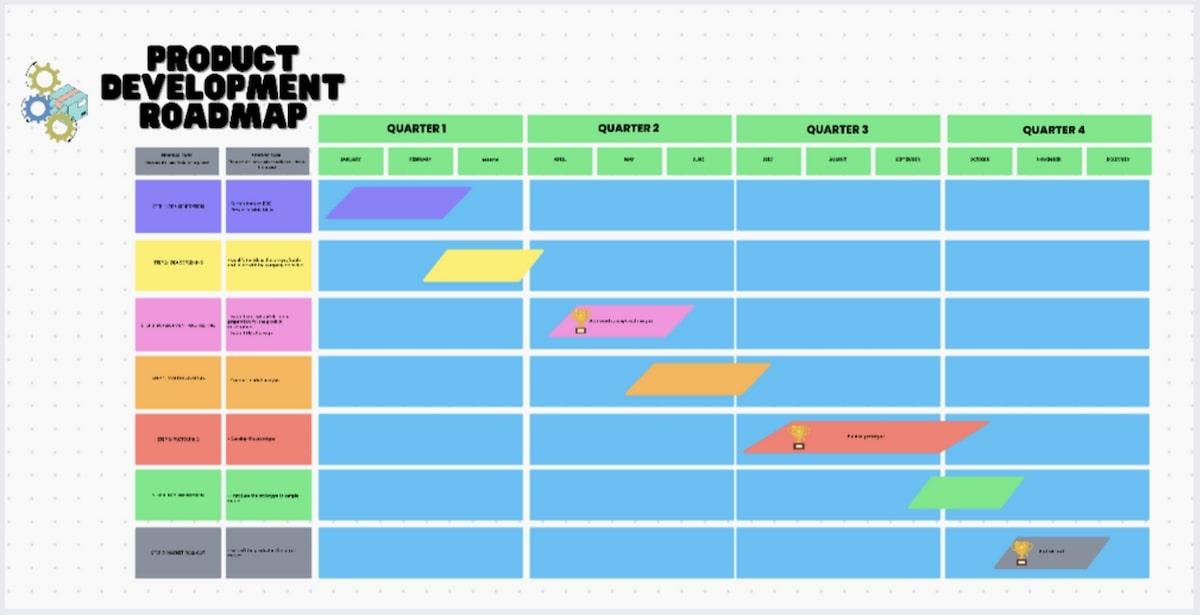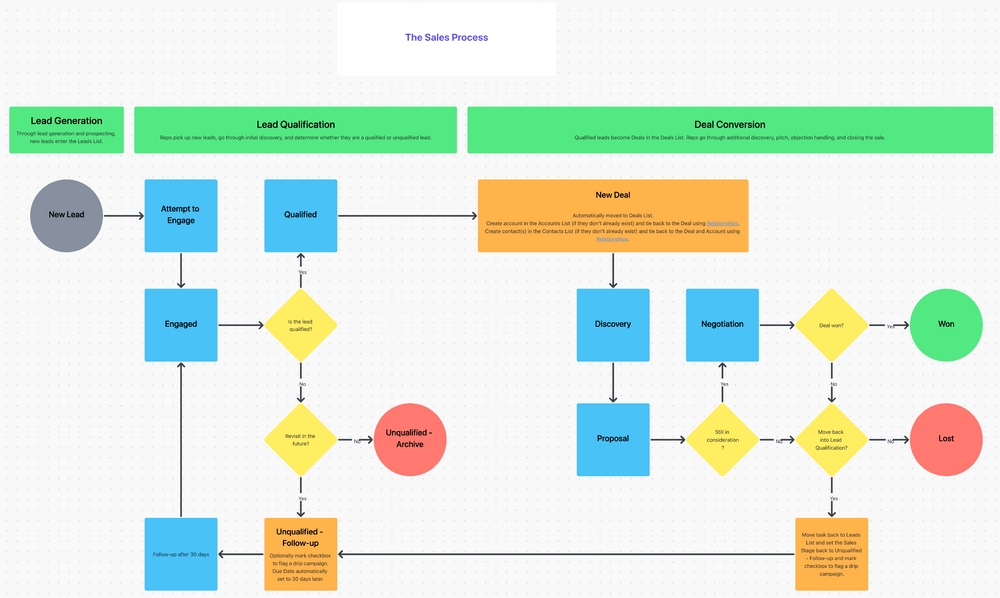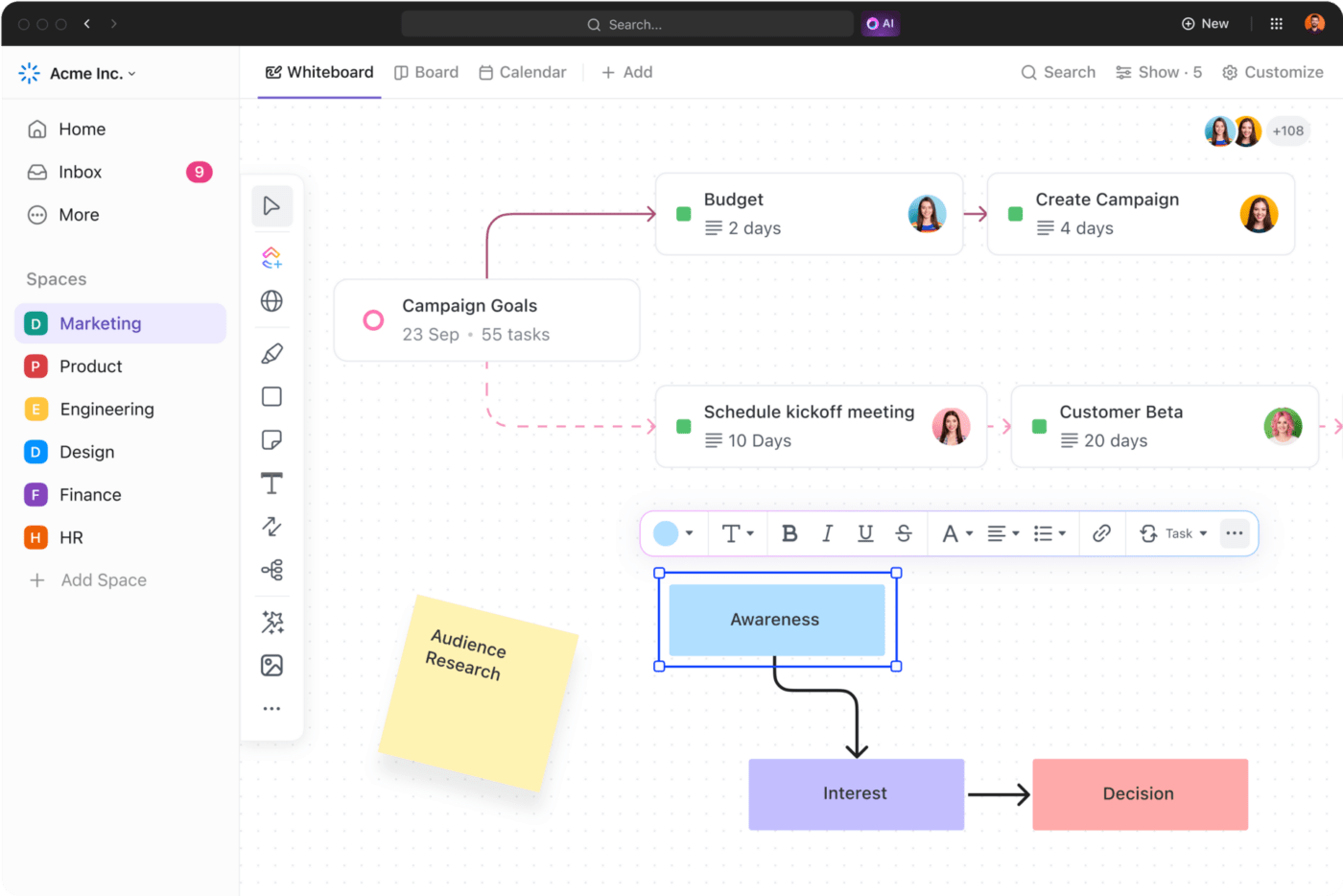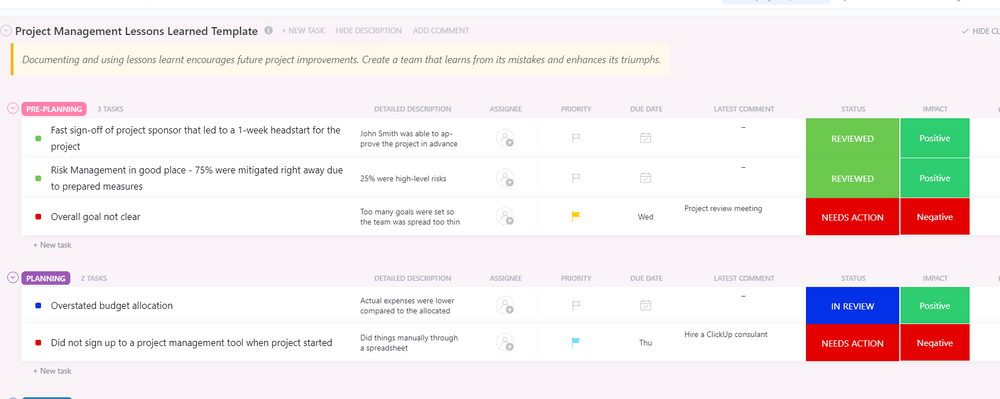

Building client trust goes beyond delivering quality products or services—it’s about fostering genuine relationships, demonstrating reliability, and consistently meeting clients’ expectations.
Whether you’re a seasoned professional or just starting out, mastering this art is essential for long-term growth and sustainability in any industry. But building your relationships is only a part of the journey—nurturing them is what paves the road to client retention. 🛠️
In this article, we’ll explore key strategies and best practices for strengthening trust with your old and new clients, from effective communication to delivering on promises. To start implementing these tips immediately, we’ll introduce you to a tool for effective project management—it will help you at each step of your trust-building journey. Let’s dive in!
- What Is Client Trust?
- Benefits of Building Client Trust
- 7 Strategies for Building Client Trust Sustainably
- 1. Involve your clients in the planning process
- 2. Build transparent business processes
- 3. Communicate and collaborate with clients regularly
- 4. Take feedback seriously to build customer loyalty
- 5. Standardize the best practices to win clients’ trust
- 6. Stick to the project deadlines and commitments
- 7. Admit your mistakes and learn from them
What Is Client Trust?
Client trust is the client’s belief in your capabilities to provide them with a product or service that meets their expectations. This belief is built on the foundation of customer experience delivered through your business processes, transparency, track record, and how you present your services.
Two key considerations lead to either trust or distrust in business long-term relationships:
- Skills, expertise, and means necessary to provide the expected product or service
- Genuinity in claims made in the negotiation phase
For sustainable and long-term client trust, a business must fulfill both and continuously deliver value throughout the collaboration.
Unlike other performance metrics—like leads or conversions—trust can be difficult to measure. Still, it can be the ultimate factor in deciding your success and client retention rate. To help your potential clients lean into you, allow them to visualize your progress. You can use the ClickUp Product Development Roadmap Whiteboard Template to do so. It lets you outline your strategy, set clear dependencies, track progress, and celebrate success.

Types of client trust
Business trust is considerably different from trust in our interpersonal relationships. It’s based on two kinds of factors—quantifiable and non-quantifiable.
The first type entails factors your clients can easily analyze, like:
- Years of experience
- Successful projects
- Testimonials of other clients
- Credentials of your team
Factors that are not easy to express, measure, or analyze include brand perception, personal relationships with your team members, or connection with the audience or customers.
We can divide client trust into rational and emotional based on these factors. While the latter influences almost all business deals, in high-value contracts where months-long partnerships and thousands of dollars are at stake, rational trust plays a decisive role. Still, emotional trust fosters loyalty, satisfaction, and a sense of collaboration. To build it, strive for the following qualities:
- Open communication
- Consistency and reliability
- Responsiveness
- Flexibility
By prioritizing both types of trust, you create a strong foundation for a long-lasting relationship.
Benefits of Building Client Trust
Forming a strong and healthy relationship with your clients allows you to earn social proof, customer feedback, and a competitive advantage—all crucial to building a lasting business. Here’s how each of these elements benefits you:
- Earning repeat business: Large multinational corporations work time and again with well-established players in each industry over newcomers. Pedigree plays a crucial role in such deals, and it’s built on the back of trust. So, the client trust you build today can help you win repeat business for decades
- Winning client testimonials: According to Gartner, 86% of businesses rely on reviews and testimonials to make purchase decisions. Trusting clients are more likely to leave a positive review, creating valuable social proof
- Gaining valuable feedback: Customer feedback plays a major role in improving any business. Implementing feedback from clients who believe in your capabilities helps in refining your offering and making it more in line with customer needs
- Gaining a competitive edge: A network of trusting customers, a portfolio of projects completed with excellence, and a strong brand image are not something your competitors can take from you. This gives you a competitive edge and allows you to close more deals
- Showcasing adaptability: Trustworthy businesses show the ability to adapt to changing client needs and requirements. Even with occasional mistakes or setbacks, your clients are more likely to turn a blind eye as long as you handle them transparently
7 Strategies for Building Client Trust Sustainably
Building client trust can be exhausting—you can’t measure it directly, and it requires time and effort. Still, you can implement several strategies to streamline the process and earn the trust of your clients in a sustainable and scalable manner.
We’ll also see how a productivity platform like ClickUp can help you practice your trust-building strategies effortlessly. Let’s break down seven strategies for healthy client relationships.
1. Involve your clients in the planning process
One of the key ways to build trust is to involve your clients in project planning. Agile project management endorses this strategy as it fosters flexibility and transparency. When clients participate in the planning process, they can provide their input on all crucial aspects, such as:
- High-priority features or services
- Project’s goals, timelines, and strategies
- Potential risks and challenges
Involving clients in planning ensures that their expectations, preferences, and priorities are understood and considered. By aligning the project plan with the client’s vision, you show that their input is valued, which builds confidence in your ability to deliver results that meet their needs.
Collaborating with clients during the planning process also contributes to a sense of partnership. To tap into that relationship, use ClickUp CRM—the customer relationship management feature that lets you onboard your clients in minutes. Invite them with an email to join your virtual workplace and include them in your planning and information-sharing workflows.

Use the ClickUp Whiteboards that provide an infinite visual canvas to design detailed plans and workflows with colorful shapes, drawings, and sticky notes. Clients can collaborate in real time, and once the plan is complete, you can create tasks directly from the Whiteboard. After that, easily manage them using ClickUp Tasks and develop granular details of your workflows.

If you feel stuck, you can use any of ClickUp’s project plan templates to establish all crucial details like task priority, status, and more. These templates can help ensure your planning stage covers essential project requirements while speeding up the process significantly.
2. Build transparent business processes
Building transparent business processes keeps your clients in the loop and helps you update them on project progress. A perfect example of this strategy in action is the Agile methodology. Regular sprint review ceremonies are organized to brief the client on the project status and demonstrate the developed software parts.
In addition to adopting an Agile project management approach, you can let your clients track project progress by creating custom dashboards.
Use ClickUp Dashboards—you can customize them with cards, like:
- Sprint backlog cards showing priorities of the current week
- Pie charts showing each member’s share of work at every stage
- Burnup and burndown charts stacking completed work against pending work
The cards are dynamic and updated in real time as your team members mark tasks as done. Once you set up the Dashboard, share it with your client so they can easily track project progress at all times.

3. Communicate and collaborate with clients regularly
Regular communication with clients goes a long way in building trust. Ensure you have a mechanism in place to inform the client of any bottlenecks in the project’s progress or the workflows you create. Similarly, clients should have a channel to contact your team members directly if they want to suggest a change or convey an urgent requirement.
The easiest way to provide such a channel is using the ClickUp Chat view. The integrated chat feature eliminates the need for long meetings while giving your clients a sense of inclusiveness in the service delivery process. 🚚
And if a client meeting must take place, you can use ClickUp Zoom integration to set it up without leaving your workspace. Likewise, clients can join the meeting with the click of a button straight from the platform.
4. Take feedback seriously to build customer loyalty
By taking client feedback and pain points seriously, you validate the importance of their opinions, experiences, and perspectives. This validation demonstrates respect for their input and acknowledges their role as valued stakeholders in the partnership. It also lets you personalize your processes and workflows to deliver the services per their expectations. This, in turn, can boost their trust in your capabilities.
To collect their valued opinions, use ClickUp Forms:
- Easily set up your form and share it with clients to start receiving feedback
- Analyze the responses you receive with the ClickUp Table view to understand which parts of your workflow require refinement and earn the trust of your clients
- Route forms input directly to designated team members so they can directly receive the feedback and implement it immediately
If you don’t know which fields to include in your forms, use the ClickUp Feedback Form Template to get started. Not only does it include all relevant fields, but it comes with a color-coded Service Rating view that you can use to analyze your clients’ responses. 🔍

5. Standardize the best practices to win clients’ trust
As you learn from customer feedback and optimize your processes, it’s important to standardize your best practices to deliver high-quality services at scale and speed. That’s what differentiates well-managed companies and helps them deliver project after project with consistent quality. Eventually, you establish clear processes and workflows that clients can anticipate and rely on, reducing uncertainty.
To set up a full-fledged wiki of your project management best practices, use ClickUp Docs. Its rich text editing and media file support create detailed documents explaining best practices for all of your projects and workflows. Create separate project-specific documents and store them in dedicated workspaces.
You can also invite your colleagues to collaborate on these docs in real time and use the built-in access controls to ensure that each team member can access the relevant procedures.

6. Stick to the project deadlines and commitments
There’s nothing more damaging to trust than not living up to your commitments. If you commit to a deadline, a level of service quality, or any other parameter of customer experience, ensure you can deliver it. In case you’re going to miss the deadline or make a compromise, proactively update your client about it—nobody likes unpleasant last-minute surprises.
To make realistic promises without fail and provide timely updates about any delays, set up a system for defining project goals and tracking work progress against them.
That’s where ClickUp Goals comes in handy. Define targets and clearly overview your main objectives using different perspectives, like:
- Task completion targets
- Team productivity goals
- Yes-no targets
- Numeric targets of any kind
Once you set the targets, you can track the actual progress of work against them to monitor whether you’re sticking to your plan and commitments. You can even set up a custom dashboard and track all targets using powerful visualizations like burndown charts, cumulative flow diagrams, and bar charts.

7. Admit your mistakes and learn from them
Admitting your mistakes shows a desire to learn and improve and indicates to your clients that you want to keep their best interests in mind. Over time, consistently demonstrating a willingness to learn and grow builds long-term trust.
While mistakes are inevitable, how you react to them is what sets you apart from your competitors.🦉
Like any other process, learning from past mistakes should be streamlined and optimized across the whole team. You can use the ClickUp Lessons Learned Template to ensure consistency and efficiently collect insights from each of your projects.

Use the template to:
- Reflect on the project: Fill out the custom fields with findings on some of the practices you implemented and the processes you’ve completed
- Highlight the lessons you learned: Use five different views to identify the workflows that set you back and notice how your team overcame them
- Improve your future processes: Create actionable tasks, assign teammates, leave comments, and ensure you fix your mistakes
Once you’ve acted on a task and worked towards an improved process, you can mark it as Done to let your client know you’re making progress. Soon enough, their trust in you will be as strong as ever!
Nurture the Best Client Relationships with ClickUp
Having the trust of your clients is a unique advantage no competitor can take away, ultimately adding to the longevity of your business. This is not a destination but a long journey that requires walking on a path of excellent and transparent customer service.
ClickUp provides everything you may need to march on that path—from CRM to Whiteboards to Docs and Goals. Sign up to ClickUp and implement transparent and scalable business processes that captivate your clients and increase their trust in your business and capabilities. 🤝



